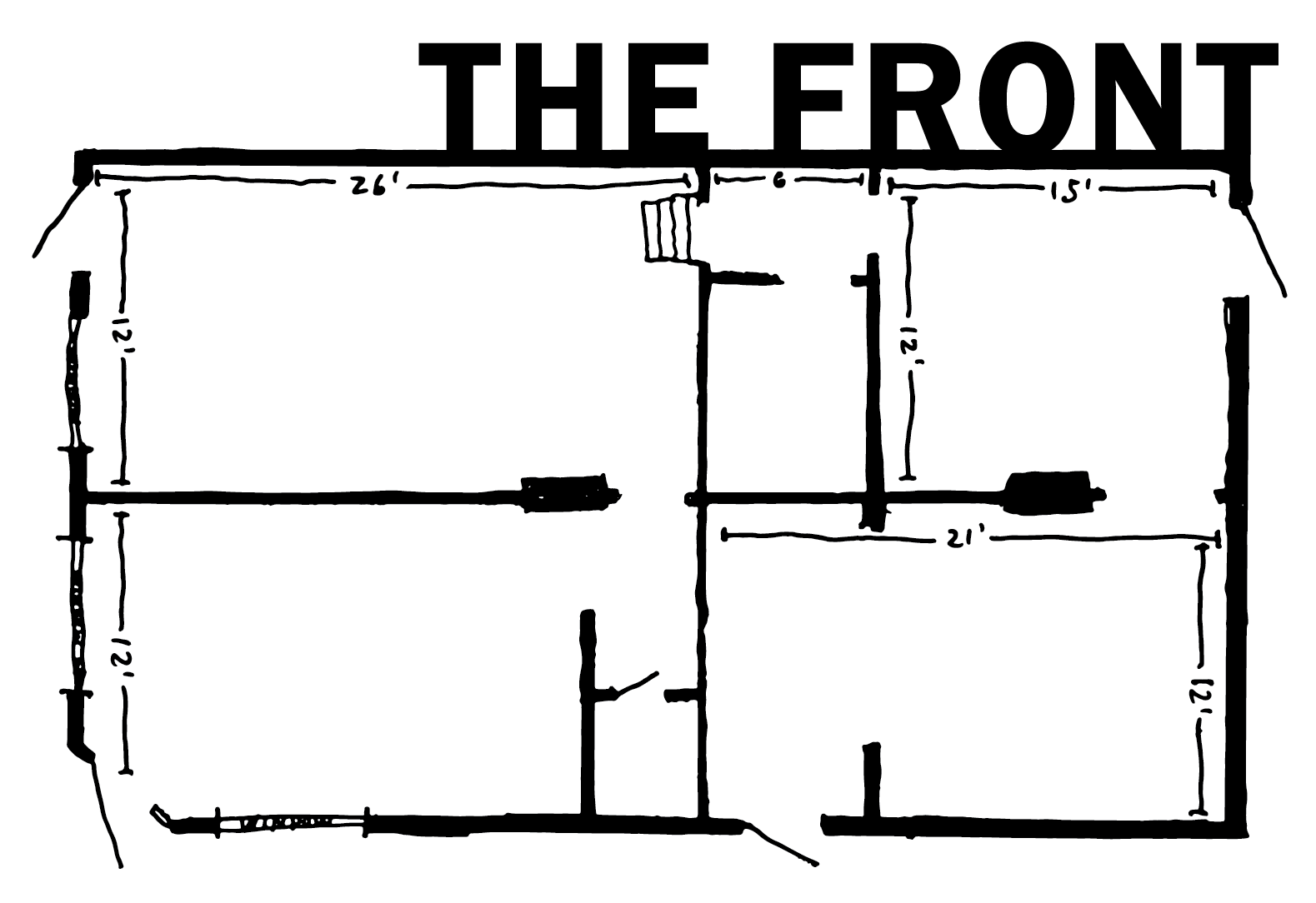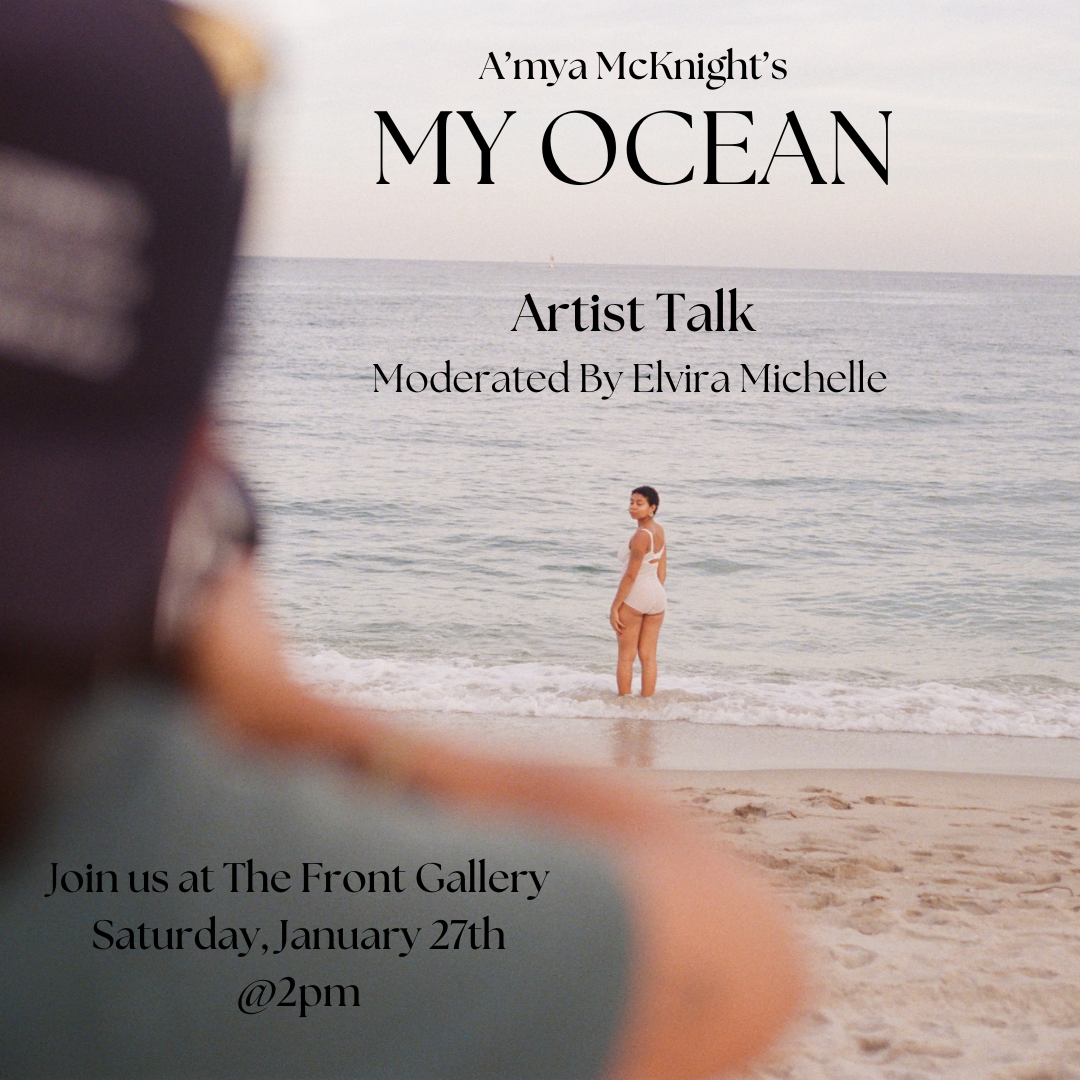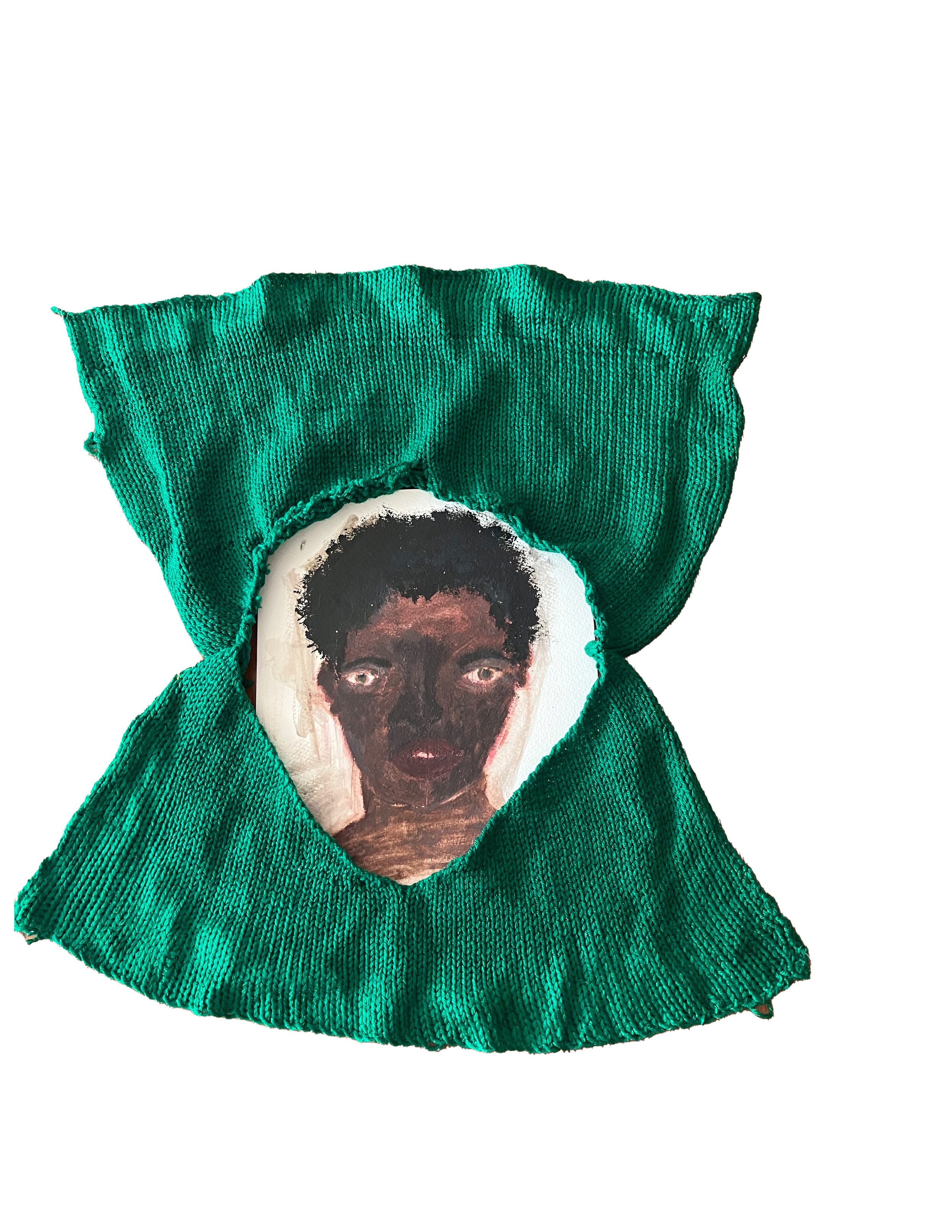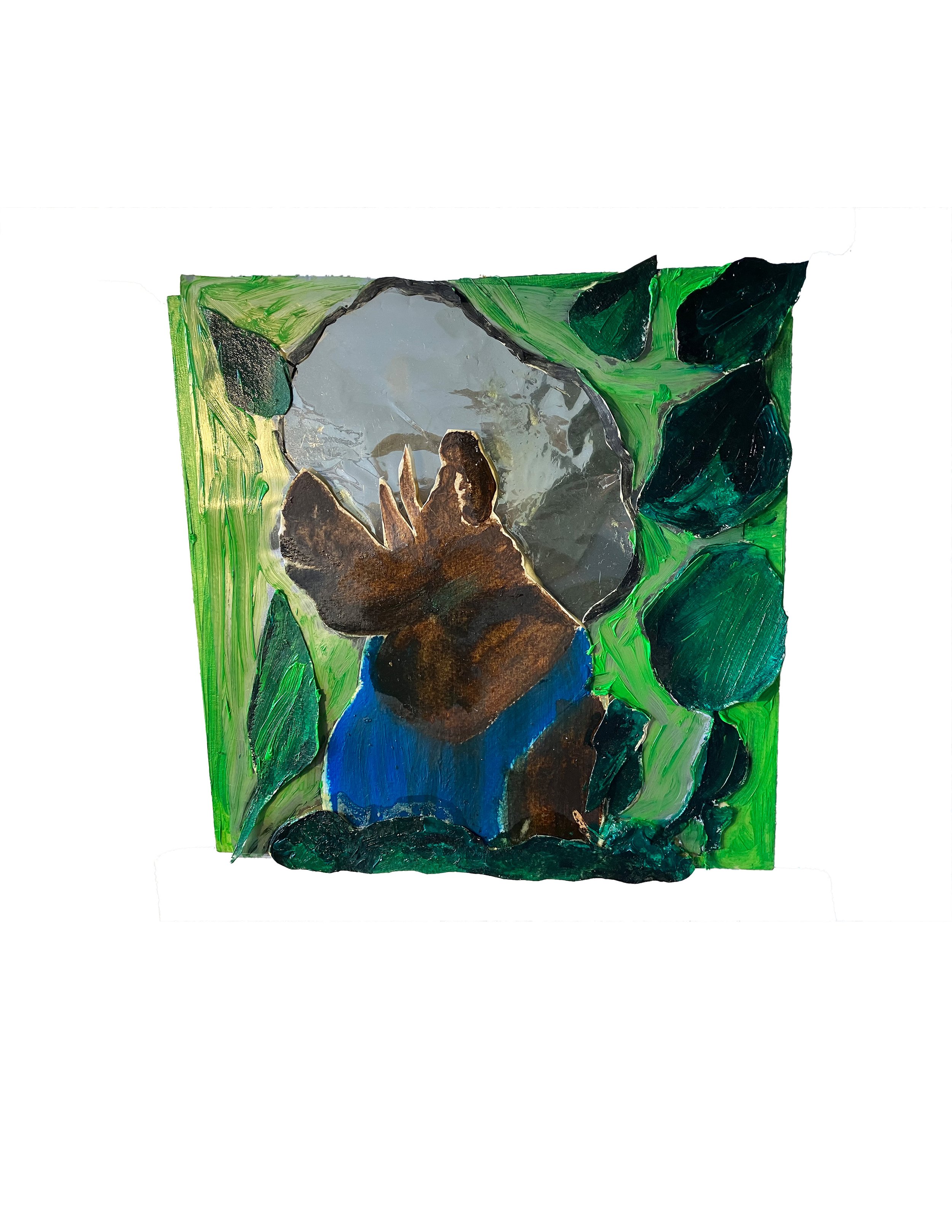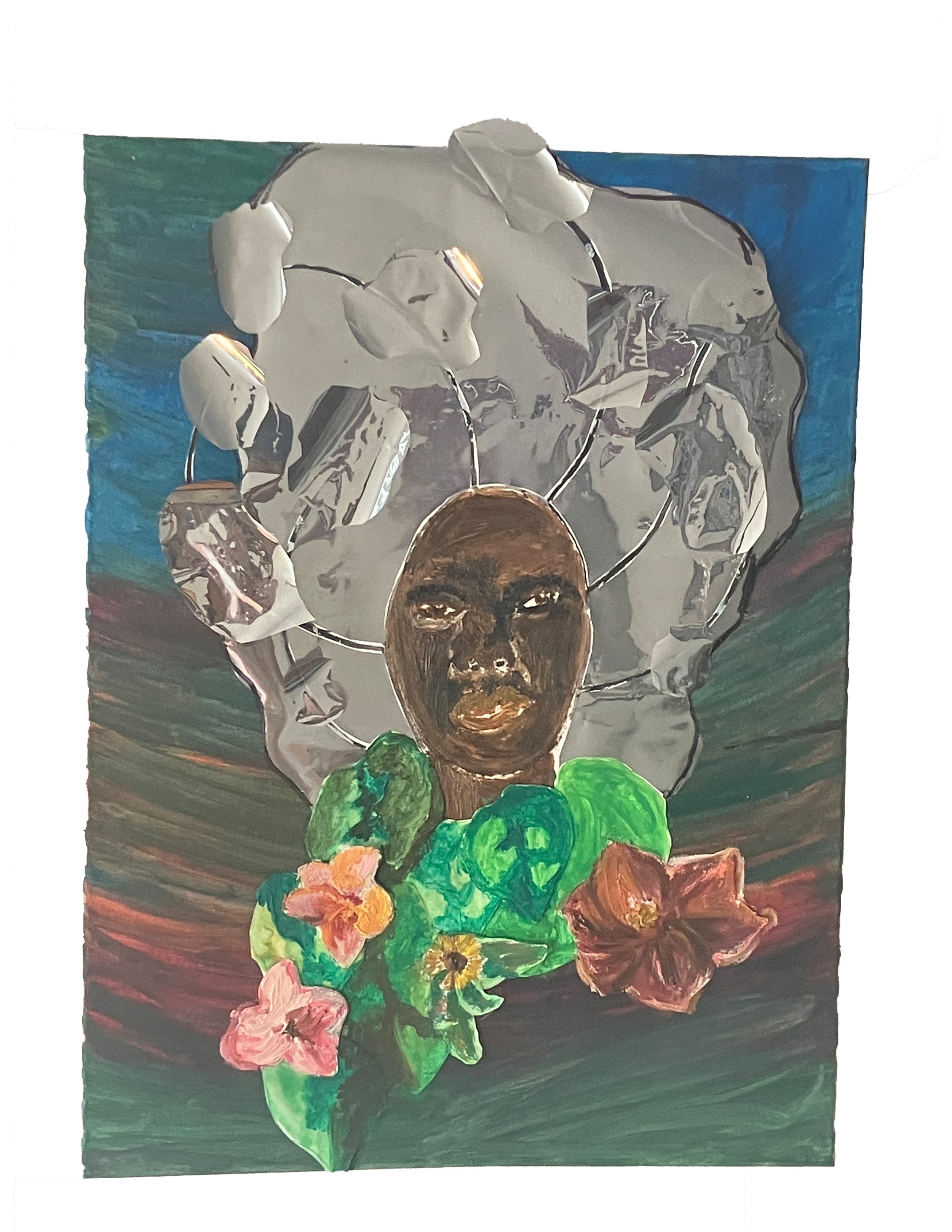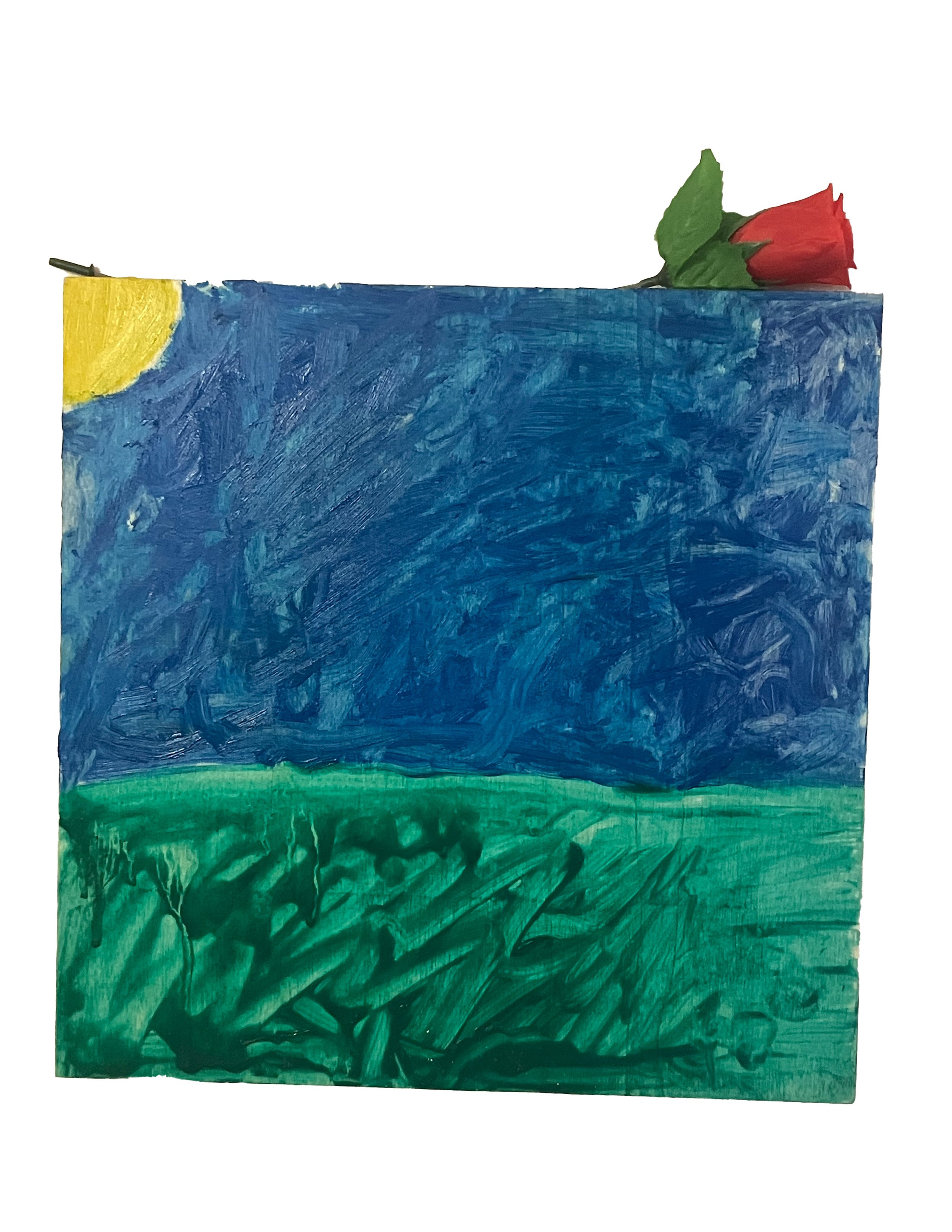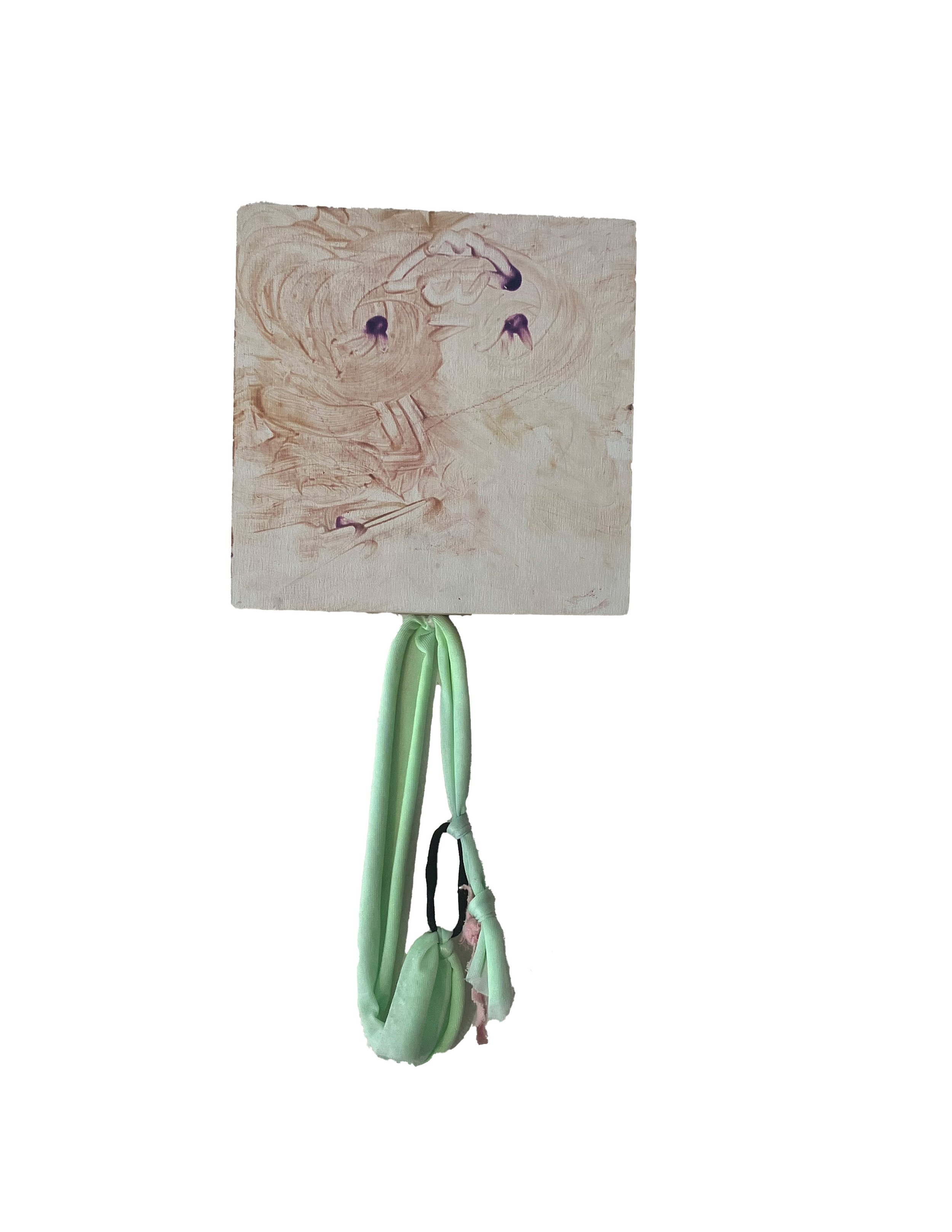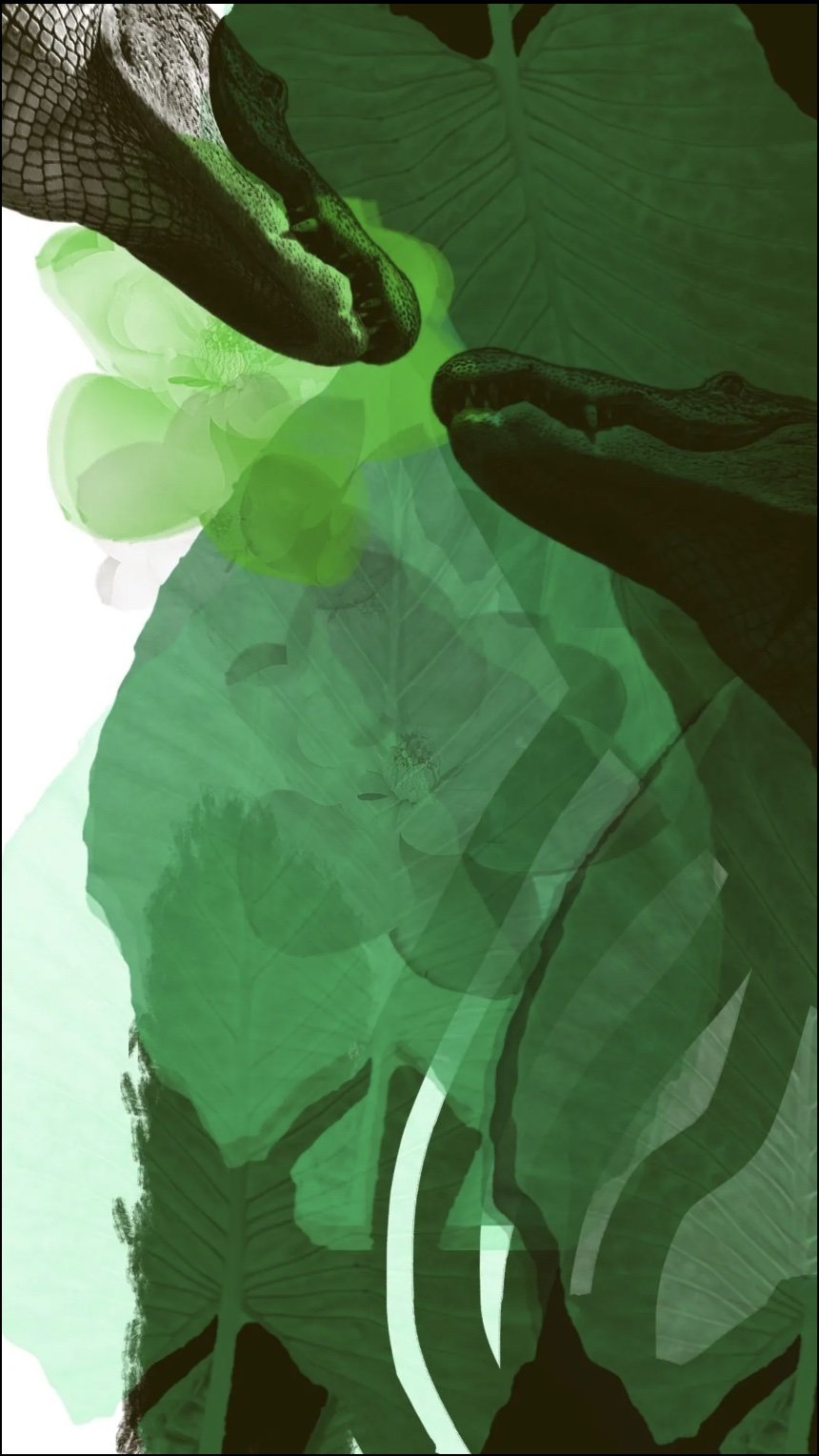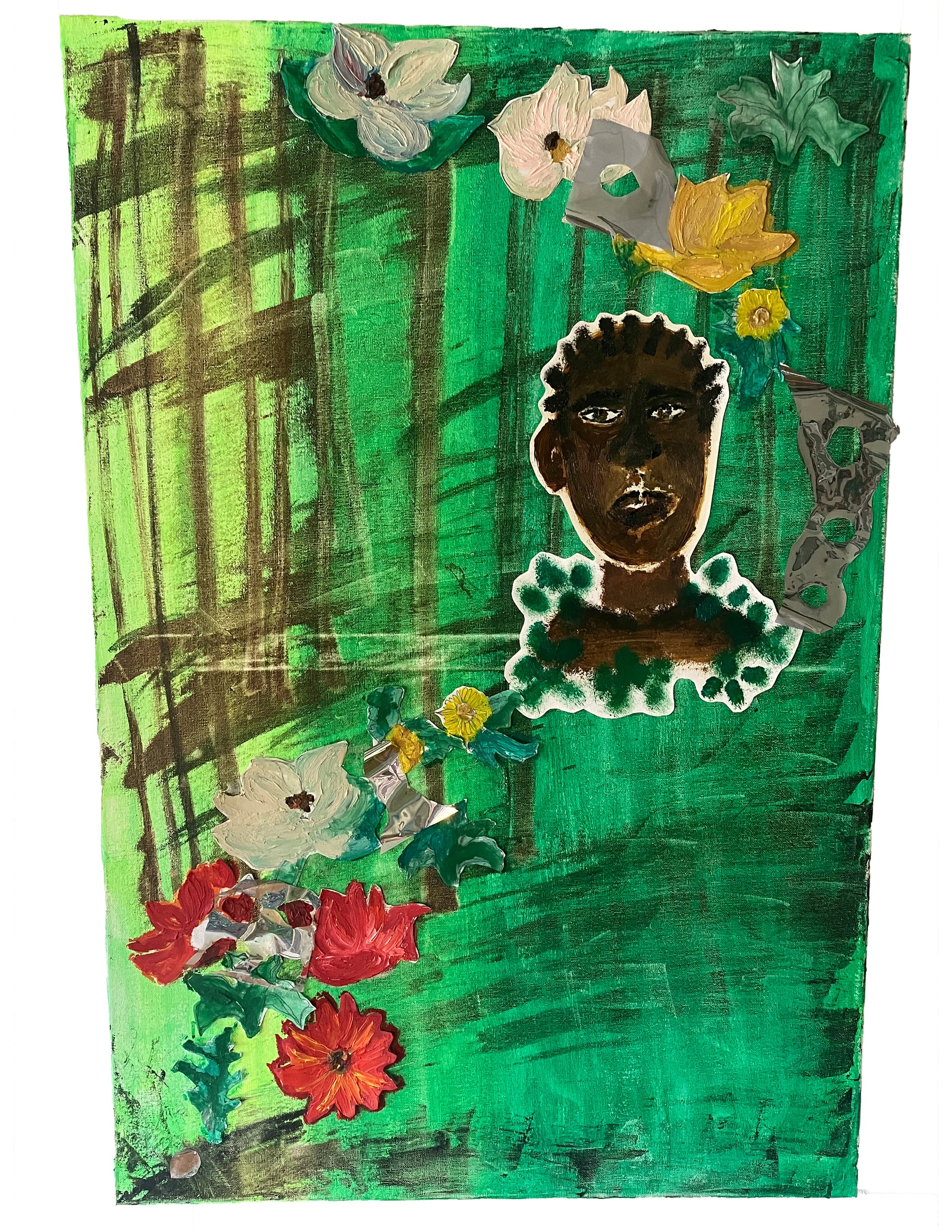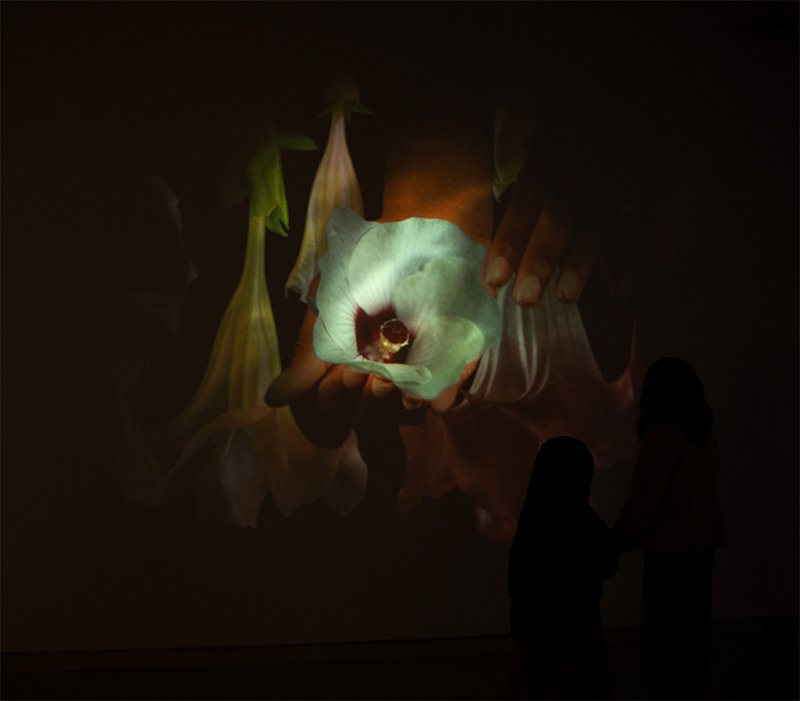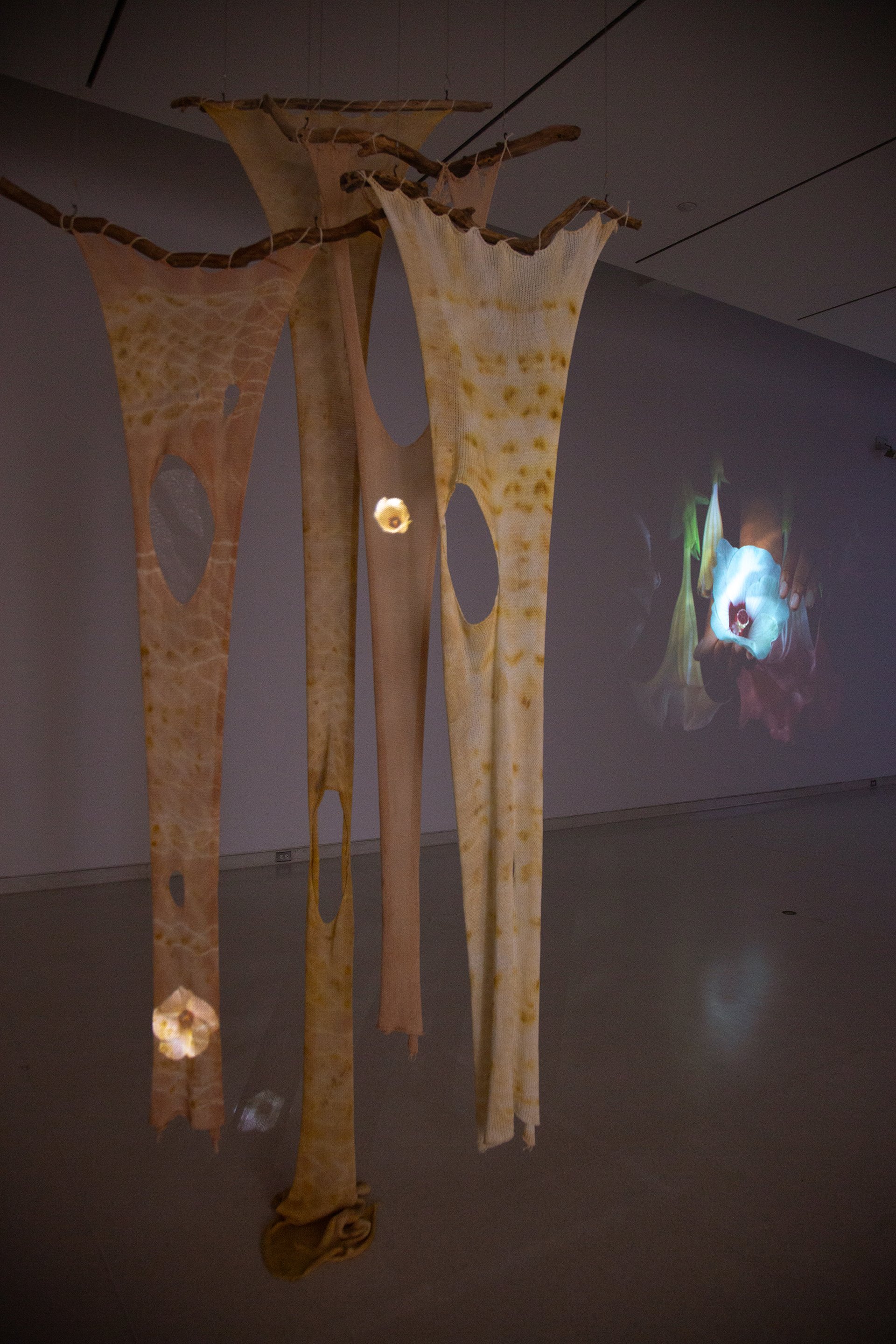January 13 - February 4, 2024
Opening reception on Second Saturday, January 13, 6-10pm.
Gallery open hours are Saturdays and Sundays, 12-5pm.
Programming This Month:
Saturday, January 27, 2pm
ARTIST TALK
ft.
A’mya McKnight,
MY OCEAN
moderated by Elvira Michelle
Saturday, February 3, 1pm
ARTIST TALK
ft.
Natori Green and Wynter Diaz,
GREEN SURFACES
followed by a discussion with
Courtney Egan and Natori Green,
Care and Cultivation
Room 1
Natori Green and Wynter Diaz, GREEN SURFACES, Interdisciplinary Visual Arts Exhibition.
GREEN SURFACES
Natori Green and Wynter Diaz
Natori Green reflected on southern landscapes in an endearing way. She is fascinated by the relationship between humans and nature. Specifically continuity after natural disasters and everyday occurrences in the south. There is a fortitude that keeps southerners rebuilding and nature resetting our southern landscapes annually. Nurturing nature is critical to human’s self-preservation. There was a conscious decision to utilize upcycled materials to raise awareness about the importance of our southern environments' resiliency and the regeneration of vintage textiles.
Green was mediative in her interdisciplinary practice. Textural diversity is expressed through the collaging of materials such as oil paints, paper, and deadstock yarns. She created cut out floral arrangements and hand stitched grass on her machine knitted textiles. The arrangements of cut out native Louisiana flowers such as Coreopsis, Red Hibiscus, and Magnolia are symbolic as they are beautiful. Coreopsis are even considered to be drought-tolerant, making them a perfect choice for areas with hot and dry climates. Red Hibiscus are a symbol of transformation and rebirth. Magnolias have remarkable survival skills and symbolize endurance. Native plants demonstrate how regenerative nature is when addressing environmental issues we frequently encounter in the south. Reclaimed wood and deadstock yarns are sustainable materials used to highlight environmental consciousness.
Green intertwines her cultural heritage as a New Orleans native into her work. Her paintings mirror her own development of cultural appreciation for African features. Her works display a personal understanding of what it means to be a black woman in the south. Women are frequently depicted centered as to claim space. Natural hair is prominent and almost exaggeratedly encompasses the surfaces of her artwork. The viewer places themselves in the artwork figuratively, and literally through her people with mirror cut out hairstyles.
This exhibition encourages appreciation and contemplation of our southern landscape. Viewers are asked to consider their personal temperament when faced with environmental issues.
Natori Green, Interwoven, 24 inches x 36 inches, 2023.
Natori Green, Me You Us, Oil on mixed media paper, 11 inches x 14 inches Knit 25 inches x 26 inches, 2023.
Natori Green, Blue, Oil and Hygloss on canvas, 12 inches x 12 inches, 2023.
Natori Green, Native Plants Are Ours, Oil and Hygloss on canvas, 36 inches x 24 inches, 2023.
Wynter Diaz, Bayou Wishes Come True, Oil on wooden panel, 12 inches x 12 inches, 2023.
Wynter Diaz, Place, Acrylic on panel with textile, 8 inches x 8 inches, 2023.
Natori Green and Wynter Diaz, Gator Connection, Digital Projection, 2023.
Natori Green (American, b.1992) creates interdisciplinary art, knitwear and fashion addressing environmental issues and identity. Highlighting native Louisiana plants and African American figures with cut out hairstyles filled with reflective materials encompass her paintings, drawings, and prints, which mostly comprise intricate exterior and domestic scenes. Green has exhibited in California, Florida, Mississippi, Tennessee, and her home state Louisiana. Visit natorigreen.com
Wynter Diaz (American, b.2014) paints everyday occurrences with gaiety and machine knits knitwear pieces. Diaz incorporates string instruments and Garageband software into her art. Her artwork has been exhibited at Antenna Gallery, Art Space 3116 and Second Story Gallery.
Room 2
Ruth Owens, Bobolink, study, casein on paper, 13 x 14.25 inches, 2023.
Kidnapped on a Sunny Day
Ruth Owens
‘Kidnapped on a Sunny Day’ is a sensorial multimedia installation that showcases a dramatic fairytale recounting the artist’s actual childhood abduction by her grandmother. As a heart wrenching poem of intense love and obsession it weaves in a request for young Ruth to always remember the gifts of this earth. A recitation of the poem is heard upon entering the shadowy installation’s tent-like enclosure of fabric with collaged botanical designs. The close and comforting space situates paintings and videos in softly lit “windows” offering sightlines into an optimistic ecological imaginary. Imagery of Black folks engaging with the natural world in a spirit of reciprocity are sourced from Owens’ family super-8 archive, and reference the poem’s storyline.
Ruth Owens graduated in 2018 with an MFA from the University of New Orleans after leaving her medical practice of 25 years. She is represented by the Ferrara Showman Gallery, and belongs to the artist collective, “The Front,” both in New Orleans. Owens’ work is concerned with contributing to and preserving the Black archive, and she uses personal super-8 film references in her painting and video art. Artist residencies include the Joan Mitchell Center, the Addison Gallery of American Art, the Vermont Studio Center, the Studios at MASS MoCA and the International Studio and Curatorial Program in NY. Her work is in the permanent collections of the 21c Museums, Ackland Art Museum at UNC-Chapel Hill, the Addison Gallery of American Art, the Dale Center for the Study of War and Society, Beth Rudin DeWoody, Fidelity Investments Corporate Collection, and the Ogden Museum of Southern Art.
Room 3
A’mya Celeñia McKnight, My Ocean, Multimedia exhibition (Poetry, Photography, and 16mm film)
photo by Alejandro de los Rios, @chamodelosrios
My Ocean
A’mya Celeñia McKnight
Welcome to the depths of My Ocean,
On my path to healing, I choose to face the most vulnerable and shameful aspects of self. Under every bandage, my stomach was the foundation and the attic that held all my trauma.
Through a series of three poems and multimedia installations, My Ocean explores stories of emotional and physical suppression. Across My Ocean, I reclaim my body finding aspects of self that had been shelved within memories.
I will be inviting women to hold space for introspection on their internal battle to reclaim their body, finding liberation from the very source of shame held within our gut.
A'mya McKnight, My Ocean, Satin Paper, 24 x 36 inches, 2023.
A'mya McKnight, The Unseen, TilePix Set 2, 8 x 8 inches, 2023.
photo by Alejandro de los Rios, @chamodelosrios
A’mya Celeñia McKnight is a multimedia artist from Harlem, New York City currently based in New Orleans. Her work focuses on the process of grief and the preservation of stories and histories passed on through families.
McKnight’s directorial debut ‘KING’, Ghetto Film School’s Jury-Prize winning short screened at The Landmark Theater, NYC in 2019. She has continued to focus her studio practice on various mediums which include poetry, photography, analog 8mm, 16mm, and 35mm film as well as launching her community based vinyl giveaway ‘Vinyl Of The Day’ in New Orleans centering local Black-Owned businesses.
McKnight has exhibited work in collaboration with Kelsey Scult at The Front Gallery, and Renee Royale at Antenna Gallery, New Orleans. She is an alum of Maysles Documentary Center and Ghetto Film School and is currently included in the Contemporary Arts Center, New Orleans ‘Seeing Black: Gestures Of Refusal’ exhibition through April 29, 2024.
Room 4
Courtney Egan & Natori Green, Care and Cultivation, film still from HDvideo, silent, dimensions variable, 2021.
Natori Green & Courtney Egan, Ravel, cotton fiber panels knitted on a manual knitting machine, wood branches, HD video projection, silent, 120” x 50” x 10”, 2023. Care and Cultivation projection seen in the background.
Care and Cultivation
Courtney Egan and Natori Green
‘Care and Cultivation’ is a collaborative work between Natori and Courtney that highlights the angel's trumpet and the okra plants' intimate relationships with humans. Both plants have traveled, and in the angel’s trumpet’s case, evolved, in the hands of people who have cultivated the plant for their own express care and cultivation.
Kidnapped and enslaved Africans brought okra seeds to the Americas and cultivated them to ensure a familiar food supply. Angel’s Trumpet is thought to have been cultivated by peoples of South and Central America for beauty and medicinal purposes for so long that many species of it are considered “extinct in the wild,” evolved to no longer make seeds but to rely on humans for perpetuation via cuttings.
Courtney recorded okra flowers blooming in early morning hours with time lapse photography to create the projections. Natori made knit panels on a vintage knitting machine, creating intentional gaps for the flowers to pass through. Courtney and Natori bundle-dyed the knits using a collection of dried and foraged Coreopsis flowers. Mercerized cotton yarn was purposely chosen for its compatibility with the coreopsis flowers during the dying process. Cotton and okra are both from the mallow family.
These artworks uphold the vegetal world as partners with the human world in the stewardship of the earth.
Courtney Egan is an interdisciplinary artist and naturalist who weaves the tradition of botanical art with sculpture and digital technologies, creating otherworldly projections. Strongly inspired by the profusion of urban flora in New Orleans where she has lived, worked, and taught since 1991, Courtney’s art practice posits the plant world and human world as cohorts with intertwined destinies.
Natori Green (American, b.1992) creates interdisciplinary art, knitwear and fashion addressing environmental issues and identity. Highlighting native Louisiana plants and African American figures with cut out hairstyles filled with reflective materials encompass her paintings, drawings, and prints, which mostly comprise intricate exterior and domestic scenes. Green has exhibited in California, Florida, Mississippi, Tennessee, and her home state Louisiana. Visit natorigreen.com
